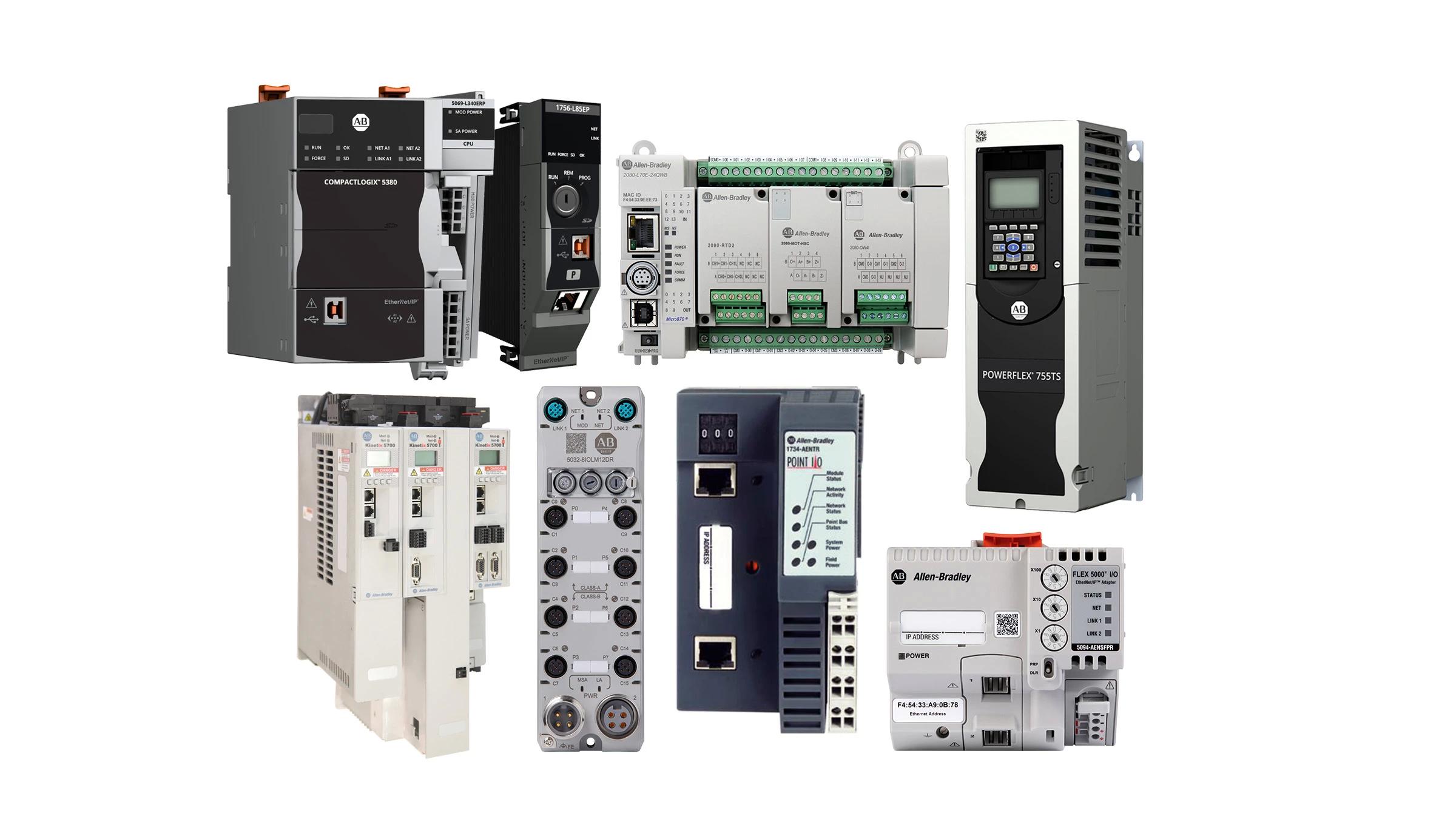Introduction: Retrofitting Allen-Bradley PLC5 Systems in Automotive Lines
In the rapidly evolving automotive industry,the integration of advanced technologies is crucial for maintaining competitiveness and ensuring operational efficiency. Many manufacturers still rely on legacy systems such as Allen-Bradley PLC5 controllers. While these systems have served their purpose, they often present challenges in terms of integration, scalability, and overall performance. Retrofitting these systems is not just beneficial; it is essential for automotive lines aiming to stay relevant in today’s market.
By focusing on retrofitting PLC5 systems, manufacturers can unlock numerous advantages that lead to enhanced production capabilities and reduced downtime. This article delves into the strategic processes involved in retrofitting Allen-Bradley PLC5 systems, illustrating how such initiatives facilitate:
- Improved System Performance: Upgrading to modern PLCs can substantially enhance processing speed and reliability.
- Enhanced Data Acquisition: Modern systems enable real-time data collection, supporting informed decision-making.
- Seamless Integration with MES: retrofitting allows for better synergy with Manufacturing Execution Systems (MES), enhancing traceability and compliance.
- Increased Flexibility: Newer systems support variable production needs and multi-product strategies, vital for today’s automotive landscape.
Through complete case studies and industry insights, we will explore how organizations in the automotive sector have successfully navigated the retrofitting process, overcoming common challenges while maximizing their return on investment (ROI).as we progress, this guide will serve as a vital resource for manufacturers looking to modernize their operations, ensuring that legacy systems contribute robustly to the future of automotive manufacturing.
Understanding the Limitations of Allen-bradley PLC5 Systems in Modern Automotive Manufacturing
When considering the limitations of Allen-Bradley PLC5 systems in modern automotive manufacturing, it becomes evident that these legacy controllers may hinder operational efficiency and integration with contemporary technologies. One crucial limitation is their reduced processing power compared to the latest PLCs that support advanced technologies like iot and data analytics. this can lead to slower response times in real-time applications, such as assembly line adjustments, which are vital in a fast-paced environment. For example, a major automotive manufacturer in Detroit experienced critically important delays during quality checks as the PLC5 system could not handle the increased load from numerous sensors, resulting in longer cycle times and diminished overall equipment effectiveness (OEE).
Another challenge arises from limited networking capabilities of the PLC5 systems. Unlike modern PLCs, which can seamlessly integrate with MES (Manufacturing Execution Systems) and cloud solutions, PLC5 systems often rely on outdated dialog protocols that can complicate data collection and traceability. In practice, this has led manufacturers to struggle with compliance and reporting standards, especially during audits where real-time data visibility is crucial. For instance, a plant seeking to attain ISO 9001 certification faced hurdles in documenting production traceability due to the PLC5’s incompatibility with newer traceability software, resulting in a manual tracking process that was not only time-consuming but also error-prone.
Strategic Planning for System Upgrades: An Effective Approach to Retrofitting
When planning for retrofitting Allen-Bradley PLC5 systems in automotive lines,organizations must adopt a structured approach that aligns with their operational goals and technological roadmap. This involves assessing current capabilities and understanding the limitations of the existing systems. As a notable example, a well-known automotive manufacturer faced significant challenges with its aging PLC5 controllers, which limited their ability to integrate modern MES systems.As a solution, they conducted a comprehensive audit of their automation infrastructure, identifying critical pain points such as data bottlenecks and the inability to leverage real-time analytics. By prioritizing the retrofitting process,they ensured minimal disruption to operations while paving the way for future enhancements.
Next, it’s crucial to design a phased implementation strategy that mitigates risk while maximizing productivity. this strategy should encompass both hardware and software considerations. For example, replacing PLC5 systems with Ignition or ControlLogix controllers enables seamless communication with HMI systems and provides standardized visualization across production lines. An automotive assembly plant implemented a multi-tiered upgrade process, where each line was retrofitted sequentially. This not only allowed the teams to gauge immediate impacts on Overall Equipment Effectiveness (OEE) but also facilitated a smooth transition to digitized traceability. continuous feedback loops were established to collect data post-retrofit, ensuring performance monitoring and alignment with organizational metrics. Ultimately, such strategic planning ensures that upgrades are not merely reactive measures but essential components of a long-term digital transformation roadmap.
Implementing Ignition Software for Enhanced Data Integration and Visualization
Implementing Ignition software in retrofitting Allen-bradley PLC5 systems allows automotive manufacturers to significantly enhance data integration and visualization capabilities. By leveraging Ignition’s modular architecture, plants can create a cohesive ecosystem that connects various automation devices while centralizing data collection in real-time. For instance, a Well-known automotive manufacturer faced challenges in monitoring their assembly line due to fragmented systems. By integrating Ignition, they eliminated data silos, enabling seamless communication between PLC5 controllers and modern HMIs. This integration not only facilitated real-time viewing of production metrics but also empowered operators to make informed decisions that minimized downtime and improved overall operational efficiency.
Furthermore, the visualization tools within Ignition, such as dashboards and graphical representations, play a crucial role in enhancing overall equipment effectiveness (OEE). Customizable screens allow operators and management to track essential metrics like machine uptime, downtime reasons, and production counts at a glance. For example, during a recent deployment, a tier-one automotive supplier utilized Ignition to develop an intuitive dashboard that identified trends in machine performance across shifts. This proactive approach enabled them to implement preventive maintenance schedules based on actual usage data, thereby reducing unplanned outages. The result was a notable increase in production consistency and a reduction in lead times,affirming Ignition’s potential in driving operational excellence in the automotive manufacturing sector.
Best Practices for Training and Change Management During PLC Retrofitting
Effectively managing training and change during PLC retrofitting is crucial to minimize disruptions on the production floor. Create a comprehensive training programme that addresses the technological transitions from the older Allen-Bradley PLC5 systems to newer platforms such as controllogix or CompactLogix. This program should include hands-on workshops and simulations tailored to line operators, maintenance teams, and IT personnel. As a notable example, a leading automotive manufacturer successfully transitioned its assembly line by implementing a tiered training approach. They began with basic awareness sessions for all personnel, advanced to specialized training for key operators, and culminated in troubleshooting and maintenance workshops. This strategy allowed every employee to have a solid understanding of the new systems’ functionalities and how to respond effectively to issues, ensuring a smoother transition with minimal downtime.
Along with training, it is indeed essential to implement effective change management strategies that facilitate smooth adoption of the new technology. One best practice is to establish a dedicated change management team composed of representatives from various departments such as production, engineering, and quality assurance. This team can guide the transition, ensuring that everyone remains aligned with the project goals. Furthermore, encourage open communication to address any concerns and adapt the process as needed. Such as, during the retrofitting of PLC systems in a vehicle assembly line, regular feedback loops were instituted so that operators could share their insights about system performance. This not only helped to identify unforeseen challenges but also fostered a sense of ownership among the staff, ultimately enhancing the overall effectiveness of the retrofitting initiative.
final Thoughts
retrofitting Allen-Bradley PLC5 systems in automotive lines is not merely a technical upgrade; it’s a strategic move to enhance operational efficiency, reduce downtime, and ensure long-term sustainability. key takeaways from this discussion include:
- Increased Efficiency: By migrating to modern PLC systems, manufacturers can leverage advanced features that minimize cycle times and enhance productivity.
- Future-Proofing: Upgrading ensures compatibility with new technologies, protecting your investment against obsolescence.
- Improved Traceability: Modern systems enable better data collection and analysis, facilitating quicker responses to quality issues and ensuring compliance with industry standards.
- Seamless Integration: Newer PLC platforms, when combined with MES solutions like Ignition, provide holistic visibility across all production lines.
We invite you to explore tailored solutions through our partnership with Innorobix. whether you’re looking for a comprehensive consultation or a live demo of our services, we are here to assist you in transforming your automotive operations for the future. Reach out today to discover how we can help streamline your processes and drive your production efficiency to the next level.

















